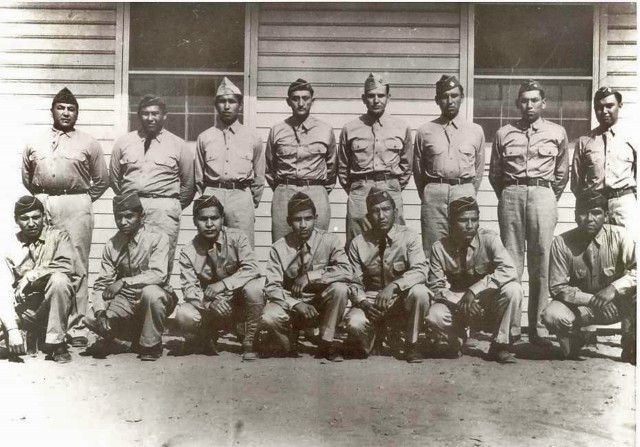Short Term Impacts
The importance of fast, accurate, and secure communication was a necessity for commanding officers to understand developments in a battle. This significance was easily met using the Navajo code. The previous encryption method, utilizing a machine to decode and encode messages, was beaten in time and accuracy by the Navajo code. The code was transmitted securely and read in under 3 minutes, while the machine took multiple hours. Being sent into their first combat trial during the battle of Guadalcanal in November of 1942, Code Talkers of 382nd Platoon would prove their work’s worth by relaying and transmitting important information for fire support missions, movement orders, enemy positions, and combat details. Continuing to fight in December of 1942, as they were too indispensable to stop using, their efforts allowed American infantry to push forward and take enemy positions, whilst limiting friendly fire through the reports of friendly and enemy positions. This saved countless lives and ensured the success of the campaign.
"After finishing the alphabet code we devised nearly 220 terms for various concepts and diverse types of military equipment. We men, barely off the reservation, were not familiar with military terms. We asked for three Navajo-speaking military men to help us. Felix Yazzie, Ross Haskie, and Wilson Price were pulled from their Marine duties and assigned to help us with the code. After we developed the code together, they went into battle with us. I don’t know why historians insist on separating them from the original 29. For me, it was the original 32."
- Chester Nez, One of the Original 32 Navajo Code Talkers, 2012
Later, their duty would take them to the battle of Iwo Jima where over 800 transmissions were made, all with indescribable accuracy, sent throughout the first two days of their deployment. In the intense fighting the island would become infamous for, Code Talkers were never safe, as Japanese signal officers would be able to call mortar strikes on their positions by locating where transmissions were being sent from. Nevertheless, their duty was vital to the effort made to take over the island by US forces, enabling pin-point indirect fire support, close air support, combat movements, casualty figures, and logistic details throughout the campaign. Not only during Guadalanal and Iwo Jima were these incredulous feats accomplished, but also during other numerous battles such as Bougainville, Saipan, Tinian, Tarawa, Guam, Angaur, and Peleliu. Each island taken bringing American forces closer to the Japanese mainland. If the underperforming Shackle Protocol had been used in place of these men, casualties and tactical disadvantages would later lead to critical strategic failures and losses in the Pacific Campaign. This would have created disaster after disaster. Eventually, it would’ve led to a total loss in the Pacific for Allied and American forces.
Some of their counterparts such as Comanche, Pawnee, Cheyenne, Cherokee, Muscogee, and Assiniboine tribesmen also made vital contributions. Done through their own codes based on their own native languages, some even served in Europe in the campaign against Nazi Germany. Their efforts are not to be overshadowed by the fame and recognition received by the Navajo Code Talkers, as they played the same roles in the successes of American forces fighting Imperial Japan in the Pacific.

U.S. Army
https://azgovernor.gov/governor/news/2020/08/governor-ducey-recognizes-navajo-code-talkers-day